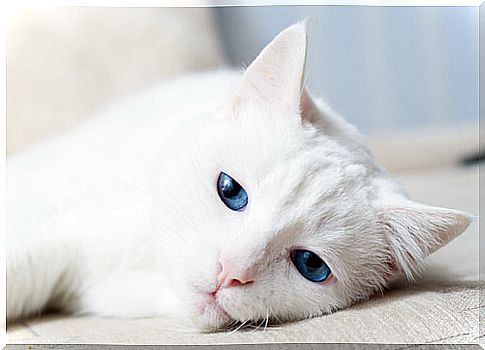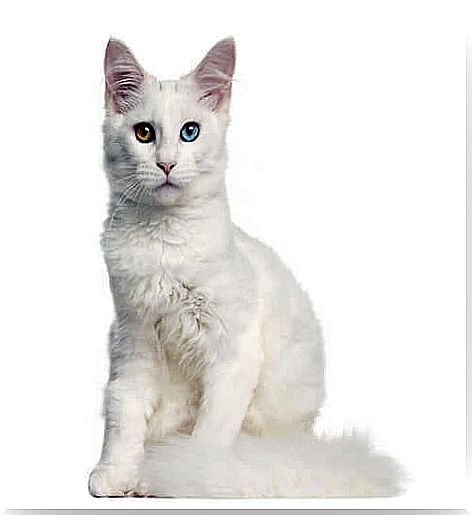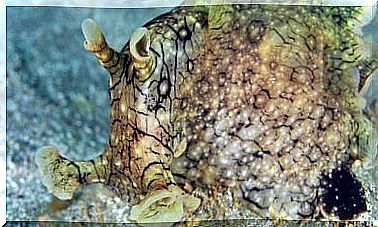Why Are Some White Cats Deaf?

You’ve surely heard that white and blue-eyed cats are deaf. This is not always the case: not all white cats are deaf. The probability of being deaf is based on the genetics of the cat’s color.
The genetics of color in cats
There are many genetic characters that depend on the cumulative action of several genes, on the interaction with other genes, or even on the environment. Color in felines is an example of this type of character.
There are many varieties in the color of cats, the result of crossing between cats with different layers of color. In a single individual, color can be determined by the action of several genes and, depending on the inheritance they have received, have a different dominance relationship between their alleles.
An allele is a version of a gene, so that for the same gene we can have an allele that can be dominant or recessive. Depending on the alleles that combine to form the coat, the adult cat will have a certain coloration.

White cats and the White gene
The White gene in cats is responsible for depigmentation: it is related to the lack of cells that produce color, the melanoblasts from which melanocytes develop. The white color is the lack of pigmentation and is due to the absence of melanin, the substance that melanocytes produce.
The W alleles of the White gene explain the white spots in the cat. There are four alleles for this gene that define four different phenotypes and have the following dominance relationship: (WT> Wh> Wl> w +).
- Total depigmentation. Given by the WT allele, which predominates over the other alleles and masks the staining contributed by the others, this is called the epistatic effect. It is also associated with blue or green eyes, one or both; these types of cats are the most prone to deafness.
- Stained. These cats may have areas stained in other colors, such as orange.
- Partial staining.
- Solid coat. These cats are recessive for the w + w + allele; they are not white cats.
Albinism in cats occurs because of a different gene. Each color coat in cats is determined by different genes and the interaction between them.
Why is the color white related to deafness?
As you already know, melanocytes have a direct role in the expression of color in animals, both in the fur, as well as in the skin and eyes. But they are also related to the formation of the auditory system during embryonic development.
The expression of W means that during embryonic development the cells that make up the melanocytes do not reach different parts of the cat’s body and produce color. For this reason, white spots, blue eyes or total depigmentation occur. If the melanoblasts do not migrate to what will be the cat’s future ear, it does not develop fully and can give rise to a deaf cat.
Not all white cats are deaf: it depends on their genetic inheritance, specifically on the form of the White gene that they received from their parents.

Some white cats are deaf – how do you know?
It can be difficult to tell just by looking at the animal, as you can compensate for its deafness with the rest of your senses. Cats have a highly developed sense of smell, good night vision and the ability to detect movement thanks to their whiskers, so to confirm deafness we need to go to the vet for a specific test.
This test is called the BAER test ( Brainstem Audirtory Evoke Response ) and it records the electrical activity in the cochlea and auditory pathways in the brain when a sound is played.








